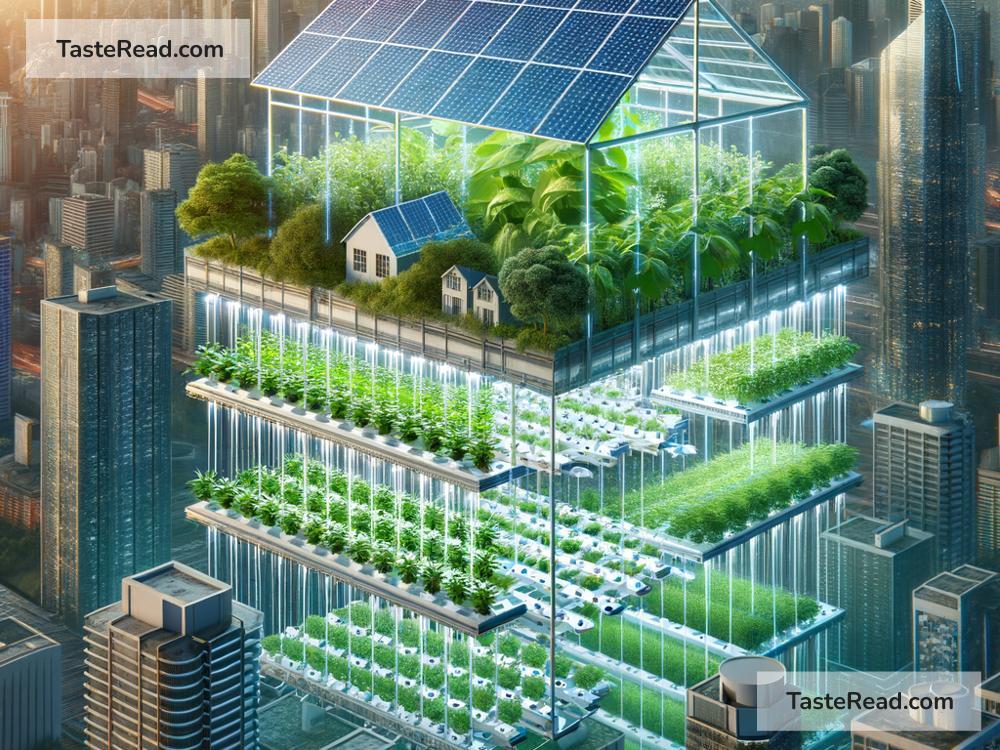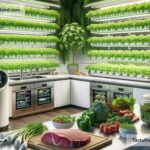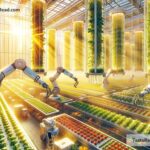The Future of Food and Sustainable Infrastructure: Building a Better Tomorrow
Food is an essential part of life, and so is the infrastructure that supports how we grow, transport, and consume it. But as the world grows, our food systems and infrastructure face big challenges. Climate change, population growth, and limited resources are making it harder to feed everyone while protecting the planet. To address these problems, we need creative ideas and technologies that focus on sustainability. In this article, we’ll explore the future of food and infrastructure, how they’re connected, and the exciting possibilities ahead.
The Challenges We Face
Today’s food systems are under pressure. The global population is expected to reach 9.7 billion by 2050. That means we’ll need to produce much more food to feed everyone. However, agriculture already takes up a huge part of the land and consumes about 70% of the world’s freshwater supply. On top of that, traditional farming methods often harm the environment through deforestation, soil degradation, and greenhouse gas emissions.
Infrastructure also plays an important role in how food gets from farms to our tables. Roads, storage facilities, and transportation networks need to be efficient. But they’re often outdated or unable to handle the growing demand, leading to food waste and higher costs. Together, inefficient food production and infrastructure damage the planet while struggling to meet everyone’s needs.
The Move Toward Sustainability
To solve these problems, we must rethink how we grow food and build infrastructure. Sustainability means creating systems that can last into the future without harming the environment. In simple terms, it’s about doing more with less—producing enough food to feed everyone while saving resources for future generations.
What Will Food Look Like in the Future?
The way we produce food is set to change in exciting ways. Here are some key innovations shaping the future of food:
-
Vertical Farming and Hydroponics
Imagine farms that grow food in tall buildings instead of fields. Vertical farming lets plants grow indoors, stacked on shelves, using special lights and water systems. Hydroponics, one of the techniques used in these farms, grows plants without soil, using nutrient-rich water. These methods use far less space and water while reducing the need for harmful pesticides. Plus, because they can be located in cities, food doesn’t have to travel far to reach people. -
Plant-Based and Lab-Grown Foods
To reduce our reliance on meat, scientists are creating alternatives like plant-based proteins and lab-grown meat. Companies are crafting burgers from peas and soy or growing real meat in labs using animal cells. These options produce fewer greenhouse gas emissions and require fewer resources than raising livestock. -
Precision Agriculture
Farmers are using technologies like drones and sensors to manage crops more efficiently. With precision agriculture, farmers can target specific areas of their fields for watering, fertilizing, or pest control. This reduces waste and boosts production while protecting the environment. -
Alternative Ingredients and Better Nutrition
In the future, we may see more foods made from insects, algae, or other unconventional ingredients that are rich in protein and vitamins. These options are sustainable and can be produced on a large scale while minimizing environmental impact.
Sustainable Infrastructure: Building Smarter Systems
To support sustainable food, we also need better infrastructure. Here’s how innovation is changing the way we build and transport:
-
Smart Cities
In the future, cities will use advanced technology to make systems more efficient. Smart sensors can monitor food distribution, energy use, and transportation, ensuring fewer resources are wasted. These cities can also incorporate rooftop gardens or urban farms, bringing food production closer to consumers. -
Green Transportation
Electric trucks, drones, and automated delivery systems will transport food without polluting the air. Solar-powered cold storage facilities can help prevent food from spoiling during transit. All of this will result in a cleaner, faster food system. -
Recycled Materials in Construction
Buildings and infrastructure that support food systems will be made using recycled or eco-friendly materials. For example, warehouses and factories can incorporate energy-efficient designs, reducing electricity and water use. -
Circular Economy Practices
A circular economy focuses on reducing waste and reusing materials. In the food sector, this means finding ways to recycle leftovers or repurpose food waste into energy or fertilizer. For example, leftover vegetable scraps could be composted to help grow new crops.
The Role of Communities and Individuals
While governments and companies must lead the way, individuals and communities also play a big role in building a sustainable future. Consumers can support eco-friendly initiatives by choosing locally sourced foods, reducing meat consumption, and cutting down on food waste. Community programs, like urban farming collectives and food-sharing networks, can bring people together to make a positive impact.
A Hopeful Vision for Tomorrow
The future of food and infrastructure is about more than survival; it’s about thriving in harmony with the planet. With smart technologies, bold ideas, and cooperation, we can create systems that provide enough food for everyone without destroying the Earth’s resources.
Change won’t happen overnight, but step by step, we’re moving toward a world where sustainability is the norm and innovation helps us solve the world’s biggest challenges. As individuals, companies, and governments work together, we can ensure a brighter and greener tomorrow for future generations.
Let’s embrace these changes—because the future of food isn’t just about what’s on our plates. It’s about how we care for the planet and each other.


